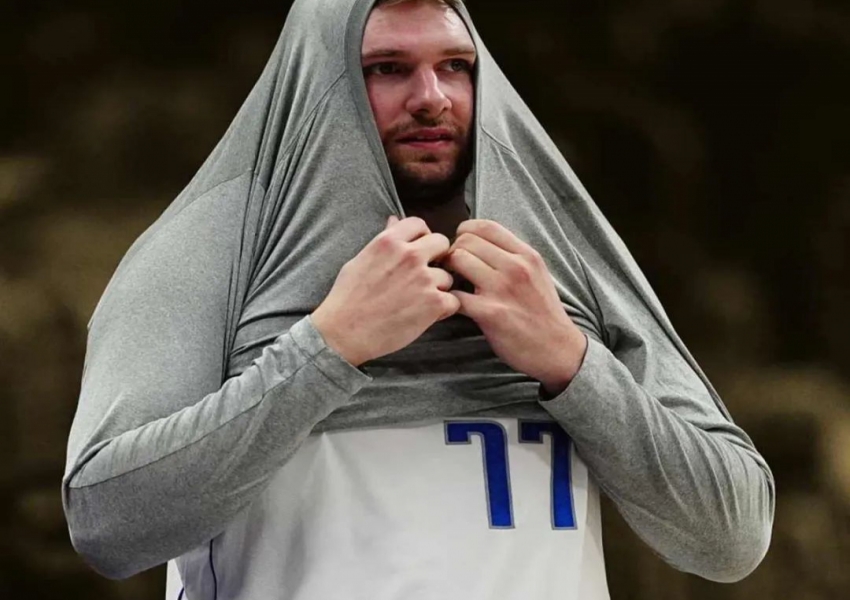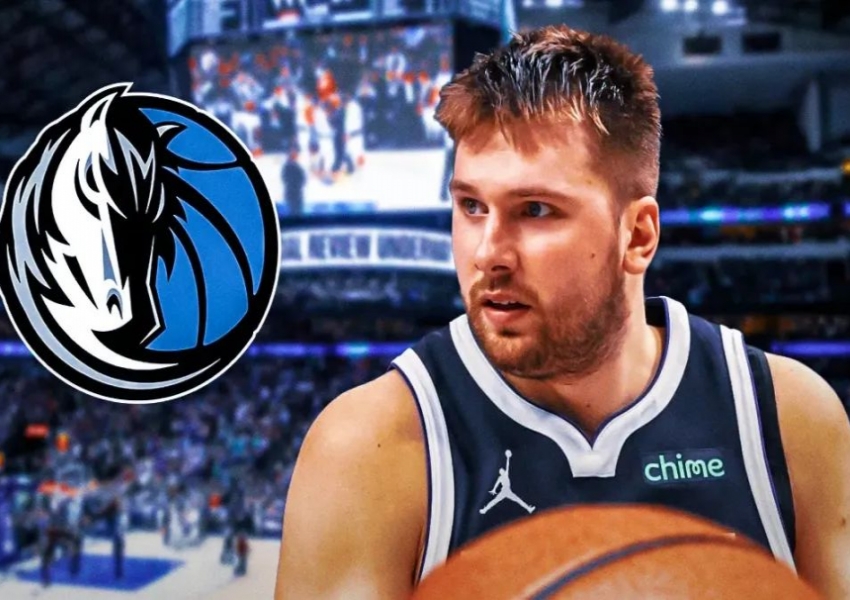25 Years Old and Trending Downward: What’s Going On with Luka Dončić?
In a game that had the NBA’s full attention due to every other team having the night off, Luka Dončić and the Dallas Mavericks fell short against the Utah Jazz, losing 113-115. While Dončić’s stat line looked impressive at first glance, his defensive lapses and declining efficiency raised serious concerns.

Dončić played 38 minutes, shooting 13-of-25 from the field, 4-of-13 from three, and a perfect 7-of-7 from the free-throw line. He finished with 37 points, seven rebounds, and nine assists—his second-highest scoring game of the season. He even hit a clutch three-pointer with two minutes remaining and set up critical plays, including a game-tying three by Klay Thompson with 26.2 seconds left.

However, Dončić’s offensive brilliance couldn’t overshadow his defensive struggles. On the Jazz’s final two possessions, Dončić’s lack of defensive focus and effort proved costly. First, Jordan Clarkson exploited a mismatch against Dončić, driving into the lane and drawing a help defense that left John Collins wide open for an easy putback.

Then came the game-deciding play: with the ball in Clarkson’s hands and all eyes on him, the guard delivered a perfectly timed pass to Collins, who Dončić had completely lost track of, for the game-winning bucket. Replays showed Dončić inexplicably focusing on Collin Sexton, already guarded by Quentin Grimes, instead of maintaining his assignment.
This wasn’t the only moment of poor defense from Dončić. Earlier, Sexton easily blew past him for an uncontested shot, highlighting Dončić’s lack of lateral quickness and defensive intensity. Such lapses have become all too common, raising questions about his overall impact on the game.
A Decline in Efficiency and Effort
Through 12 games this season, Dončić is averaging 29.3 points, 8.0 rebounds, and 8.0 assists while playing 37.9 minutes per game. These counting stats are impressive—ranking him fifth in minutes, third in scoring, and ninth in assists league-wide. However, a closer look reveals troubling inefficiencies.
Dončić is shooting just 42.8% from the field, 32.0% from three, and 81.0% from the free-throw line. His true shooting percentage (TS%) stands at 54.5%, below the league average and a stark contrast to last season’s elite 61.7%. His defensive metrics are equally alarming. Opponents are shooting better when guarded by Dončić, with field-goal percentages rising from 45.9% to 50.0% and three-point accuracy jumping from 36.0% to 40.3% when he’s the closest defender.
Advanced stats paint an even grimmer picture. Dončić’s Player Efficiency Rating (PER) has dropped from 28.1 last season to 21.9, and his Box Plus-Minus (BPM) has plummeted from 9.9 to 4.2, leaving him outside the league’s top 20 in both categories.
Comparing Luka to Last Season
The decline is particularly jarring given Dončić’s incredible performance last season. He averaged 33.9 points, 9.2 rebounds, and 9.8 assists, winning the scoring title and ranking third in assists. His shooting splits—48.7% from the field, 38.2% from three, and 78.6% from the line—were among the best of his career.
Last year, Dončić’s offensive dominance carried the Mavericks to the NBA Finals, and he entered this season as a top MVP candidate. Sportsbooks even listed him as the preseason favorite for the award, reflecting the sky-high expectations surrounding him.
Defensive Woes
Dončić’s defensive shortcomings aren’t new, but they’ve become more pronounced this season. His lack of effort, poor positioning, and tendency to ball-watch have made him a target for opposing offenses. As one of the league’s most ball-dominant players, Dončić’s inability to contribute on defense adds extra pressure on his teammates to cover for him.
In the modern NBA, where two-way stars dominate, Dončić’s one-dimensional contributions become a glaring weakness. Despite his undeniable offensive talent, his defensive lapses raise questions about his overall value, especially in high-stakes games.
Kyrie Irving’s Efficiency Highlighting Luka’s Decline
Dončić’s struggles are further magnified when compared to his backcourt partner Kyrie Irving, who has been spectacular this season. Irving is averaging 25.2 points, 4.6 rebounds, and 4.9 assists with shooting splits of 54.5% from the field, 54.1% from three, and 85.7% from the free-throw line. His TS% of 66.1% ranks among the league’s best, and his PER (24.0) and BPM (6.8) comfortably outpace Dončić’s.
While advanced stats don’t tell the entire story, the contrast between Dončić and Irving underscores the former’s unexpected regression.
The Mavericks’ Struggles
Dallas’ disappointing 5-7 record reflects Dončić’s struggles. After a promising start, the team has fallen to 12th in the Western Conference, with inconsistent play and defensive lapses undermining their efforts.
Dončić’s leadership and performance are critical for the Mavericks’ success. With his skill set and high usage rate, he sets the tone for the team on both ends of the floor. As the face of the franchise, he must elevate his game if Dallas hopes to return to championship contention.
Time to Turn Things Around
At 25 years old and in his seventh NBA season, Dončić is no longer the young prodigy with endless potential. He’s firmly in his prime, and the window for achieving career-defining milestones like MVP awards and championships is narrowing.
While it’s still early in the season, Dončić’s declining efficiency and defensive lapses are concerning. Both he and the Mavericks have time to turn things around, but the pressure is mounting. For a player once seen as the heir apparent to LeBron James, the stakes have never been higher.
Copyright Statement:
Author: focusnba
Source: FocusNBA
The copyright of this article belongs to the author. Reproduction is not allowed without permission.
Recommended Blog
- Internal Feud Erupts! Rui Hachimura Holds Nothing Back!
- Usage Rate at 25%! Farewell, LeBron James? Officially Passing the Torch in L.A.
- 57 Assists in 8 Games! Ben Simmons Proves His Worth in a Contract Year
- Internal Rift Explodes: Farewell, Rui Hachimura! The Lakers’ Starting Core Player
- Official Debut! 11 Minutes, 5 Points: Another Chinese Forward with NBA Potential
- Three Games, 22 Threes: Is Victor Wembanyama Becoming Unstoppable?
- He’s Back! China's Top Big Man Returns to Action with a Four-Year Max Contract
- Rare Outburst! Curry’s Emotional Outburst and Anger Revealed: Did Thompson Make the Wrong Move?
- The Remarkable Resurgence of 39-Year-Old Chris Paul: Still Dominating the Game
- Locking Out Choi Yong-Hee! Zero Points, All Zeros! The Nets Show No Mercy…
Hot Blog
- Tension in New York? Mikal Bridges Calls Out Thibodeau’s “Plantation-Style” Rotation!
- Kevin Durant = Three First-Round Picks? In Just Two Years, the Suns Lost Big!
- Major Decline! What Is De'Aaron Fox’s True Level with the Spurs?
- Completely Out of the Rotation! Why 25-Year-Old Cam Reddish Can't Get on the Court Anymore
- A Miraculous Buzzer-Beater—But What Level Is Kawhi Leonard Really At Now?
- 4,000 Threes! Just How Impossible Is Stephen Curry’s Latest Record?
- $110 Million Over Two Years—Butler Was Worth Every Penny
- $293M Supermax and an MVP? Is There Any Doubt Left for Shai Gilgeous-Alexander?
- $418M for Luka Dončić? Is the Lakers' New Star Worth It?
- 31-21-22! Did Jokic’s Historic Triple-Double Just Reignite the MVP Race?